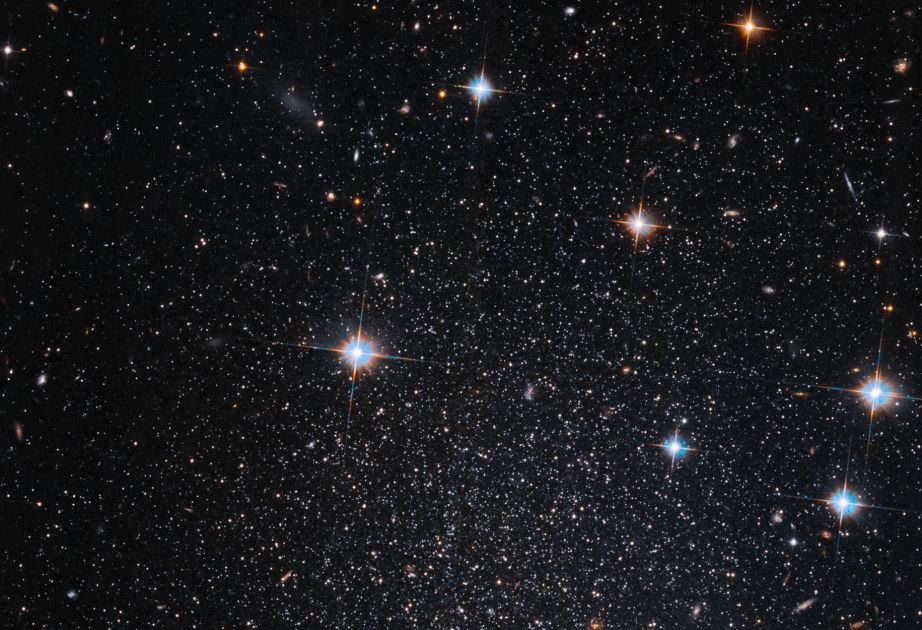NASA scientists study spheroidal Andromeda galaxy

NASA's Hubble Space Telescope has captured an image of the dwarf spheroidal galaxy Pegasus, also known as Andromeda VI. In this photo, a bright collection of stars shines against the background of more distant galaxies, Azernews reports.
The Andromeda galaxy is the largest spiral galaxy closest to the Milky Way and at least 13 dwarf galaxies revolve around it. The dwarf spheroidal galaxy Pegasus is one of these mini-galaxies. Dwarf spheroidal galaxies are considered the faintest and least massive celestial bodies known to astronomy. Their elliptical shapes seem brighter against the background of a relatively smooth distribution of stars. Dwarf spheroidal galaxies are usually poor in gas, with a predominance of old and medium-sized stars, new ones are rarely formed.
The dwarf spheroidal galaxy Pegasus was discovered in 1998 and
is characterized by the presence of a small number of heavy
elements compared to its analogues and a small amount of gas
necessary for the formation of a new generation of stars. The
researchers report that Andromeda's gravitational field contains a
small amount of star-forming gas. For comparison, they show some
dwarf spheroidal galaxies of the Milky Way. But Andromeda is wider
and its gravitational influence is stronger than others.
Astronomers believe that dwarf spheroidal galaxies are formed as a
result of collisions between their giant counterparts, the
gravitational influence of larger galaxies on smaller disc-shaped
dwarf galaxies, and processes associated with the formation of
small systems between clusters of dark matter. Andromeda and the
Milky Way are the only galaxies closely observed by scientists that
are located close enough to be easier to study.
The Hubble Space Telescope is observing this galaxy as part of a study of the entire Andromeda satellite system in order to investigate important issues such as dark matter, ionization and the growth of galactic ecosystems on a cosmic time scale.
---
Follow us on Twitter @AzerNewsAz
Here we are to serve you with news right now. It does not cost much, but worth your attention.
Choose to support open, independent, quality journalism and subscribe on a monthly basis.
By subscribing to our online newspaper, you can have full digital access to all news, analysis, and much more.
You can also follow AzerNEWS on Twitter @AzerNewsAz or Facebook @AzerNewsNewspaper
Thank you!
